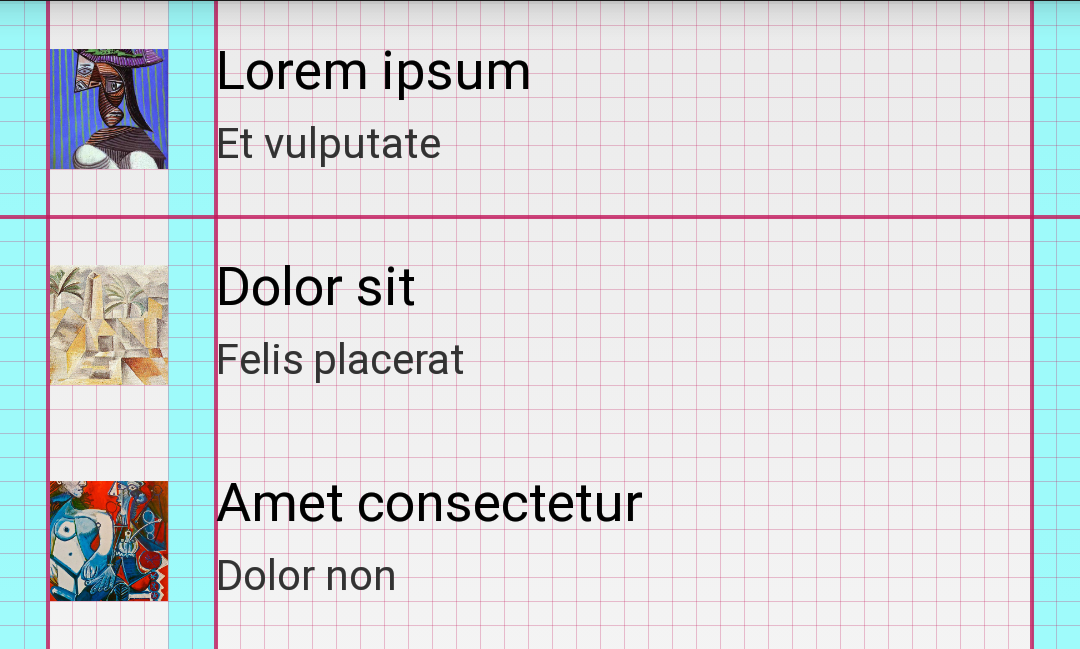With all the recent focus on baseline grids, keylines, and spacing markers from Android’s material design, I found myself wondering how I could make it easier to check the correctness of my Android UI implementation against the intended spec.
Wouldn’t it be nice if you could easily provide the spec values as input and get it rendered on top of your UI for comparison? Enter dspec, a super simple way to define UI specs that can be rendered on top of Android UIs.
Design specs can be defined either programmatically through a simple API or via JSON files. Specs can define various aspects of the baseline grid, keylines, and spacing markers such as visibility, offset, size, color, etc.
Given the responsive nature of Android UIs, the keylines and spacing markers are positioned in relation to predefined reference points (e.g. left, right, vertical center, etc) instead of absolute offsets.
The JSON files are Android resources which means you can easily adapt the spec according to different form factors e.g. different specs for phones and tablets. The JSON specs provide a simple way for designers to communicate their intent in a computer-readable way.
You can integrate a DesignSpec with your custom views by drawing it in your View‘s onDraw(Canvas) method. But the simplest way to draw a spec on top of a view is to enclose it in a DesignSpecFrameLayout—which can take an designSpec XML attribute pointing to the spec resource. For example:
<DesignSpecFrameLayout
android:layout_width="match_parent"
android:layout_height="match_parent"
app:designSpec="@raw/my_spec">
...
</DesignSpecFrameLayout>
I can’t wait to start using dspec in some of the new UI work we’re doing Firefox for Android now. I hope you find it useful too. The code is available on Github. As usual, testing and fixes are very welcome. Enjoy!

















0sem comentários ainda